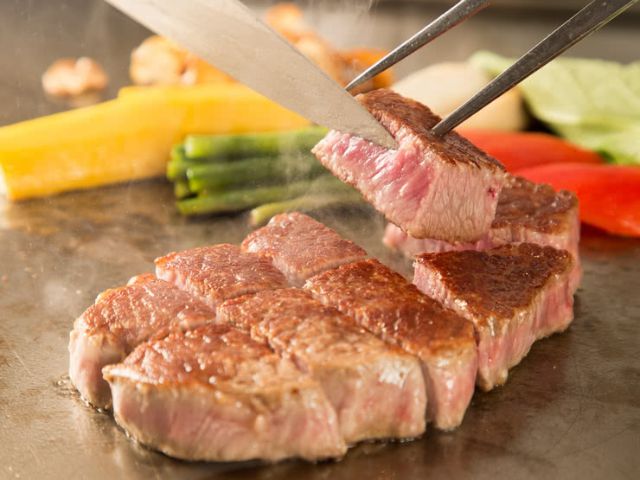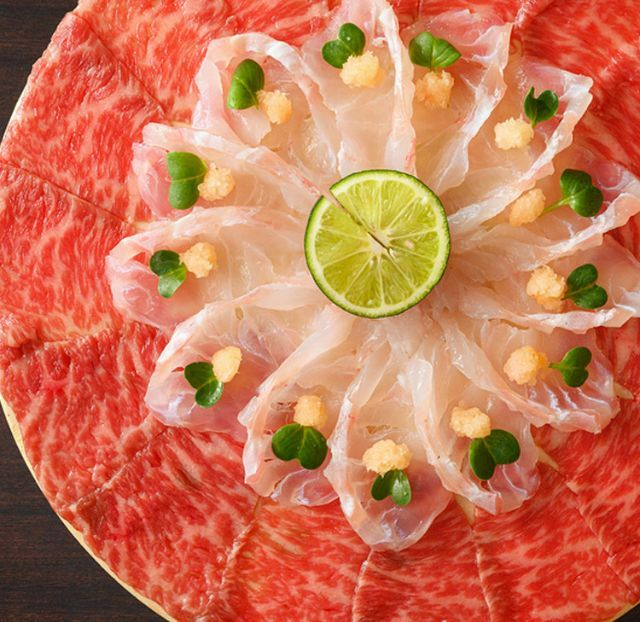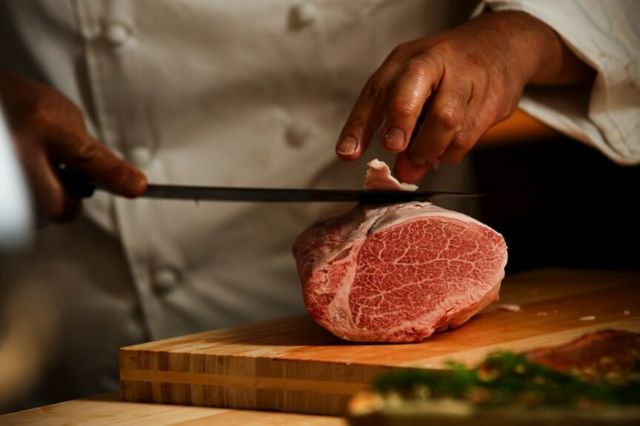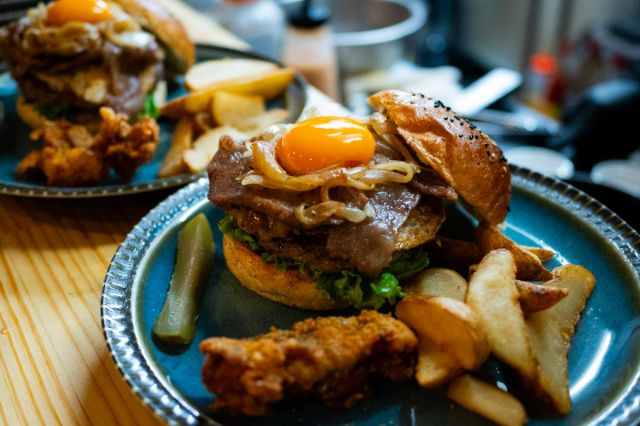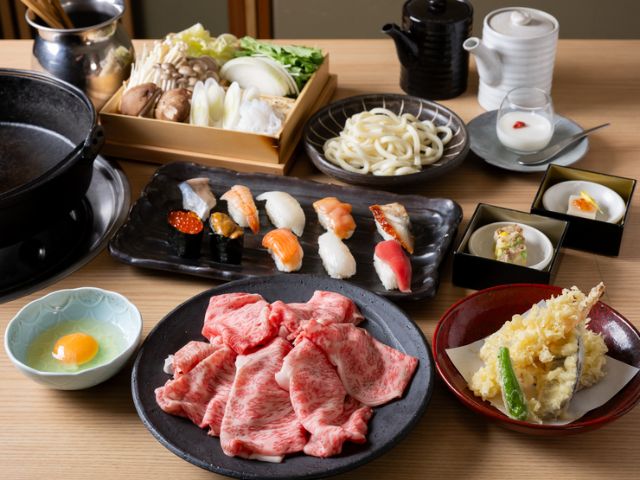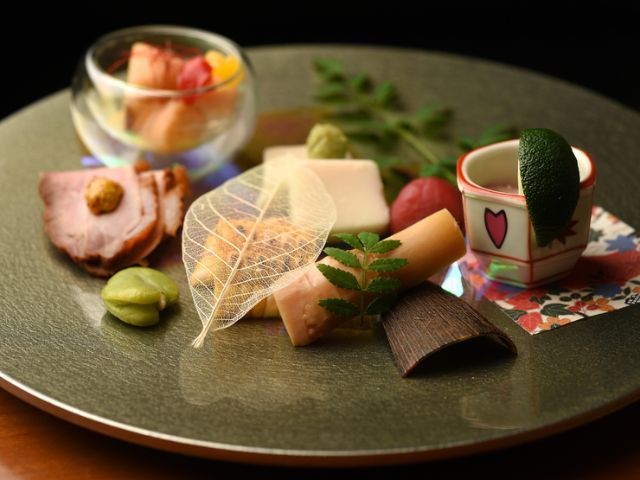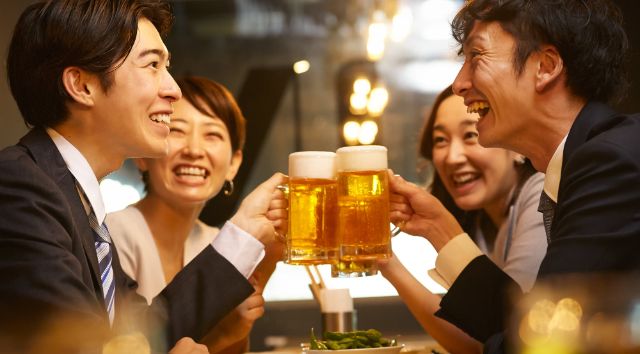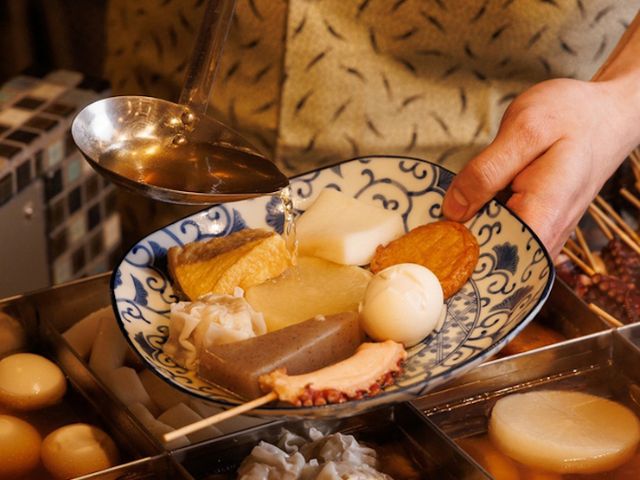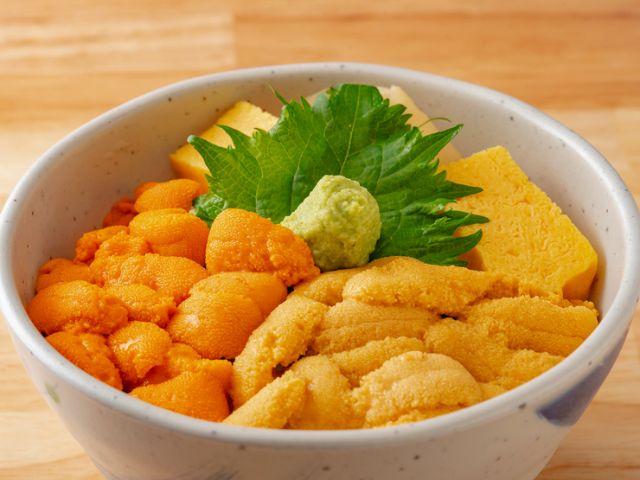[Closed] Excellent Wagyu in Ginza, Tokyo! One of the Best Teppanyaki Spots According to Foodies from All Over
1. What is "Teppanyaki"?
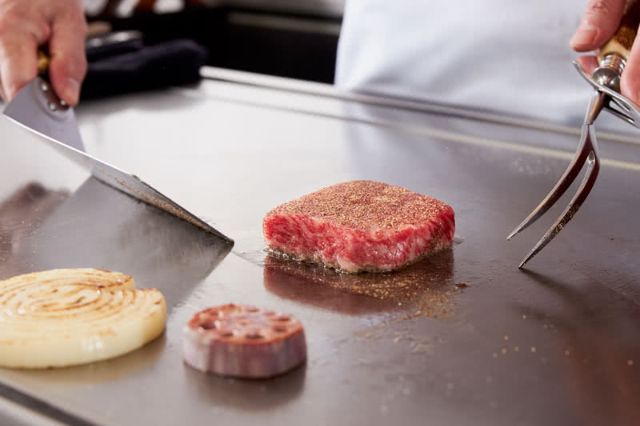

2. The charms of Kobe Beef

3. What you need to know before eating teppanyaki
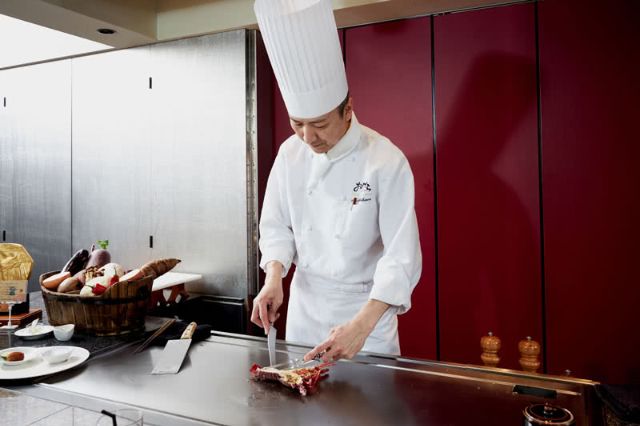
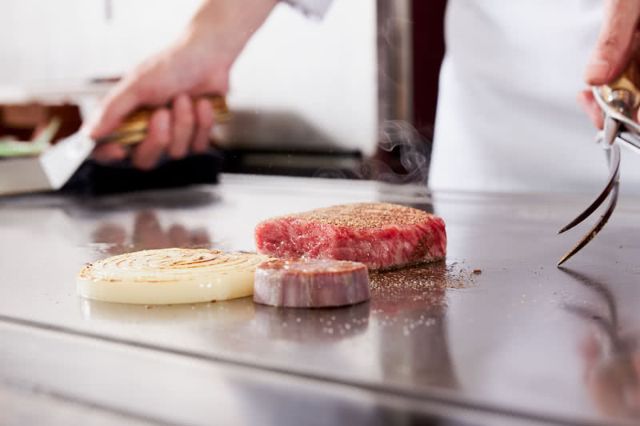
Another key feature of any Japanese teppanyaki spot is that the chef cooks your food right before your eyes. This way, you enjoy it not just with your tastebuds, but also with your eyes, ears, and nostrils, so it is fair to say that you can savor teppanyaki dishes "with all your 5 senses". Have fun enjoying this unique spectacle and smell. Also, avoid wearing to much perfume as it may ruin the delicious aroma of your food.
4. About Teppanyaki Ginza Onodera
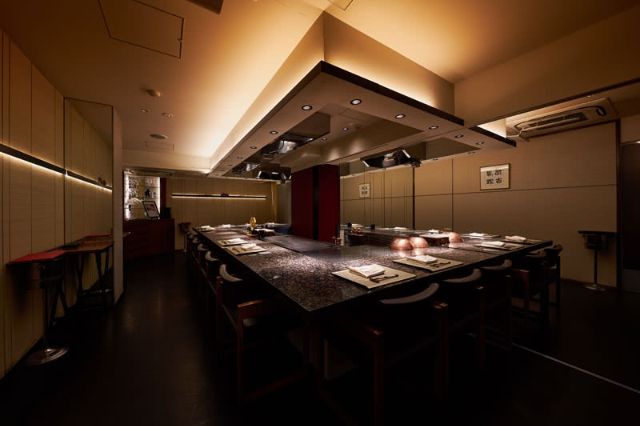
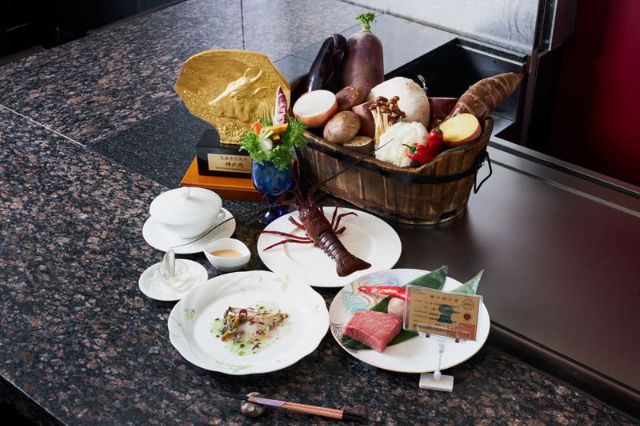
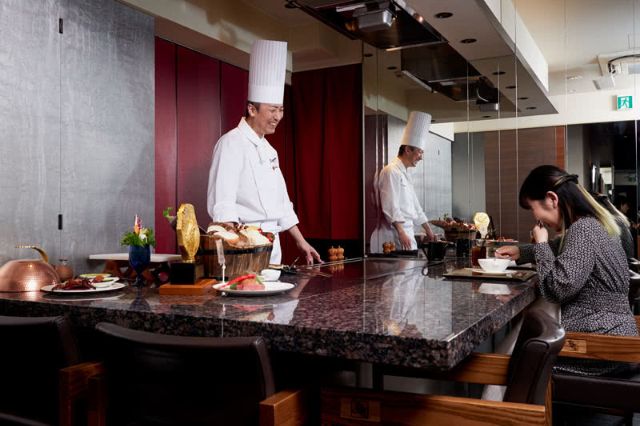
5. About the chef
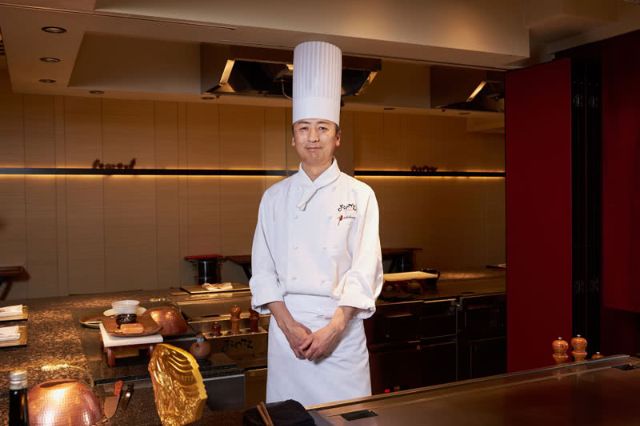
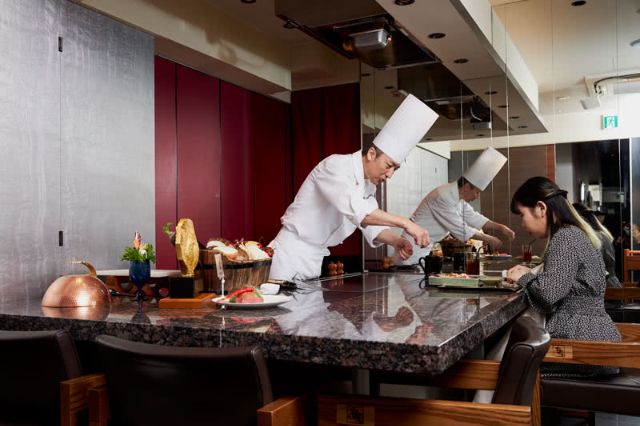
6. Top-grade wagyu! The [The Classic Menu] featuring Kobe Beef
![5. Top-grade wagyu! The [The Classic Menu] featuring Kobe Beef](https://rimage.savorjapan.com/svj/image/discover_oishii_japan/1318/article_151472_w640z.jpg)
**Please be aware that the course menu introduced below is undergoing a renewal process, and as such it will no longer be available starting from May 2020.
Appetizer <Japanese Sake Steamed Abalone>
It's super meaty yet extremely tender, and the shellfish broth and green laver used to make the sauce creates a gental aroma that brings the smell of the beach to mind. Plus, the flowers used to decorate the plate accent it with a pleasant sourness that offers a whole different flavor when you eat them together.
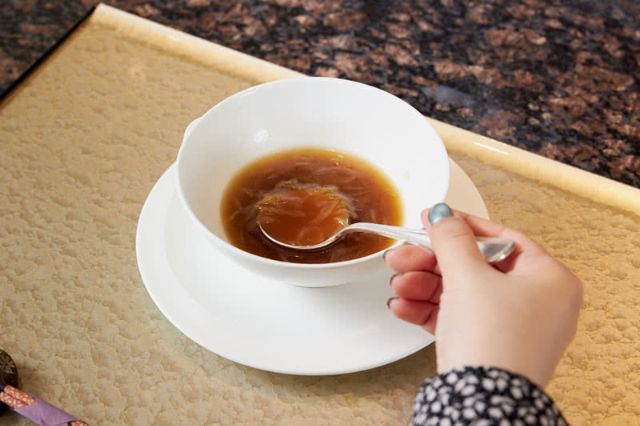
This onion soup looks so simple yet boasts an unexpectedly rich taste. It's made with a consommé slow-cooked for 3 days, while the onions are stewed in it for another half-day. It's got a deep flavor that makes it a very classy dish.
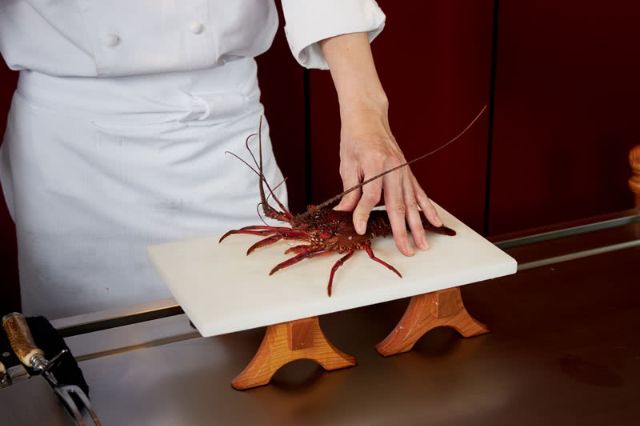
What shows up next in front of your eyes is a frantically moving spiny lobster. The chef shows off his excellent skills as he fillets the fresh lobster, so you may want to take a picture of this marvelous scene!

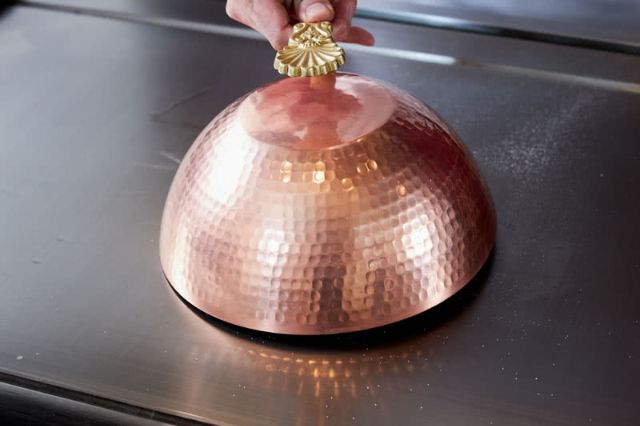
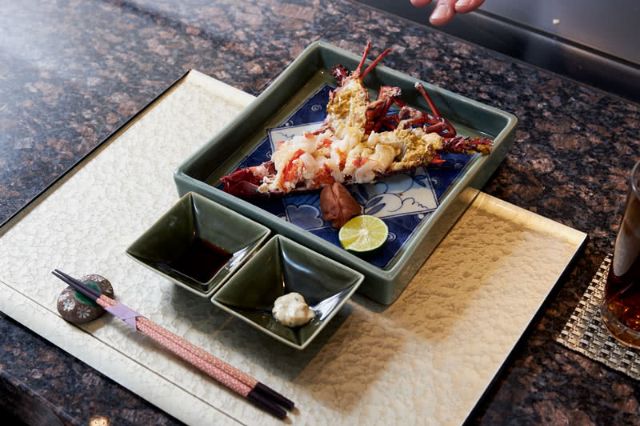
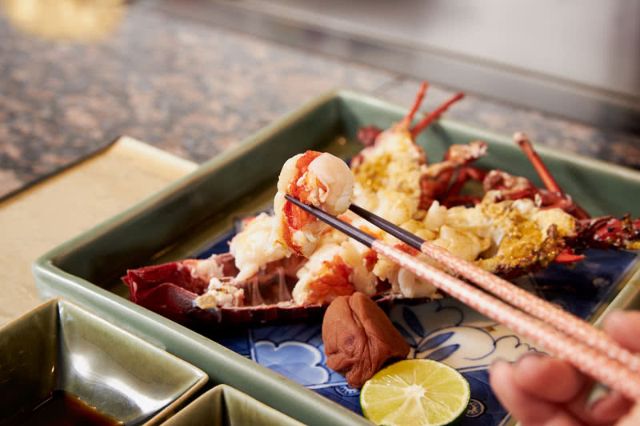
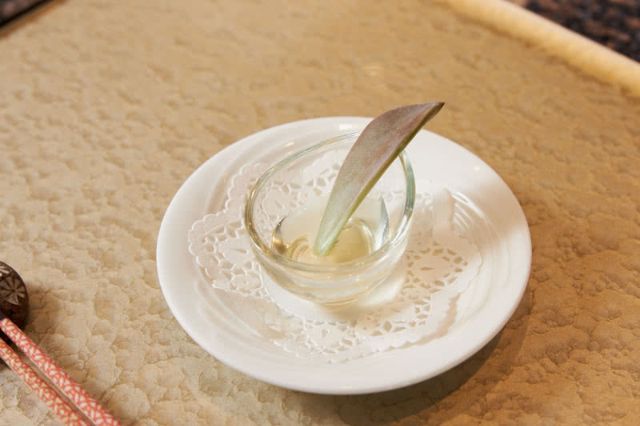
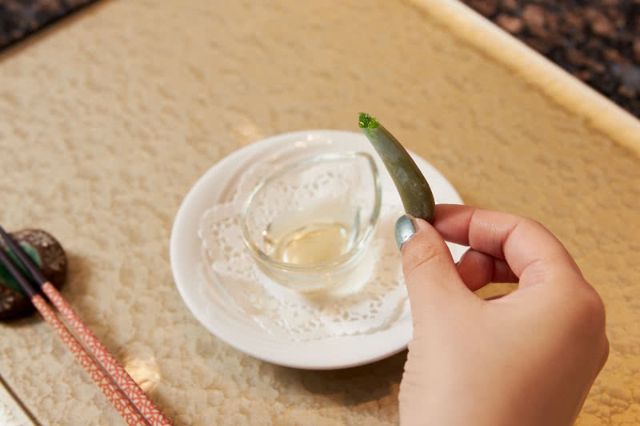
[Ghost Plant] is a succulent plant and an extremely rare ingredient. Here, they serve a grapara leaf dipped in honey. The crunchy texture and the juiciness you get after biting in creates a very refreshing feeling.
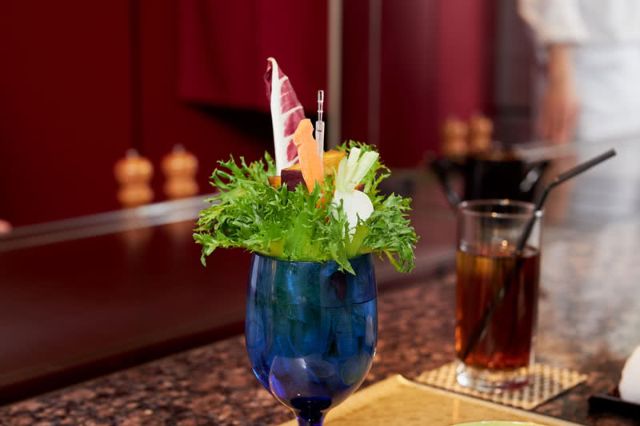
Next, it's the time for some frill lettuce grown in a hydroponic farm (it means it's not cultivated in soil, but indoors, using water). The advantage of hydroponic farming is the systematic cultivation that allows maximizing the size, nutrients and the thickness of the vegetables to the utmost limits.
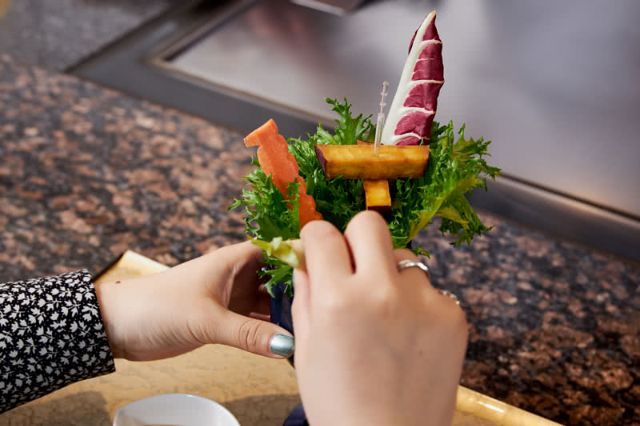
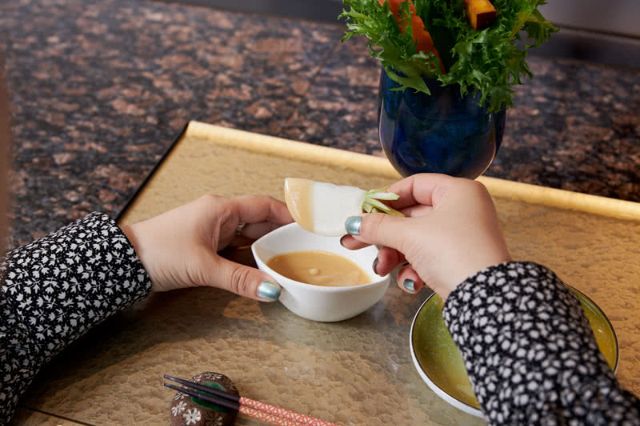

Now, it's finally time for the main dish. But first, you must be curious to learn more about the "Living body aging" technique used at Onodera. Living body aging is an aging method that starts when the meat is still alive. At Onodera, they perform an over 30-month long-term fattening procedure which allows the umami of the meat to stay locked inside while the cow is still alive.
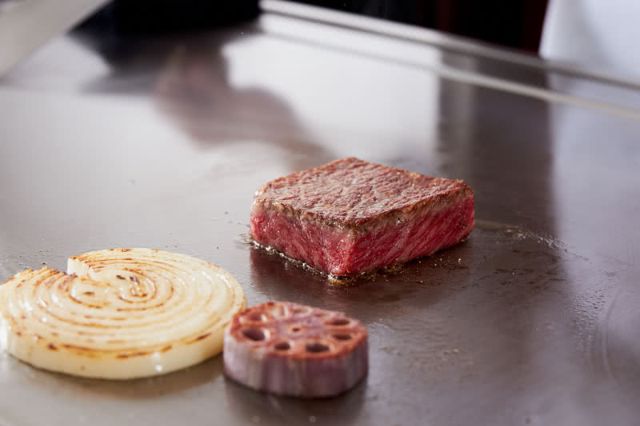
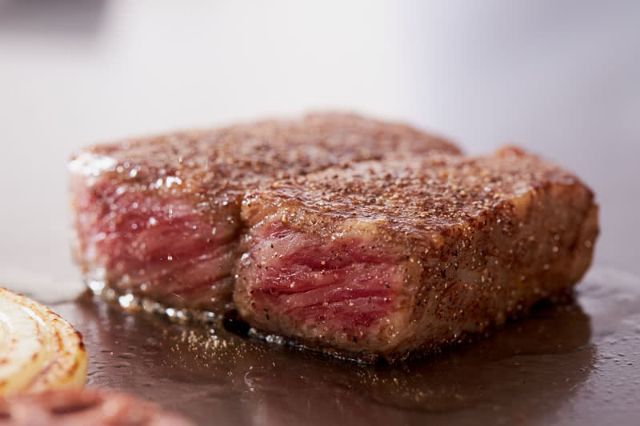
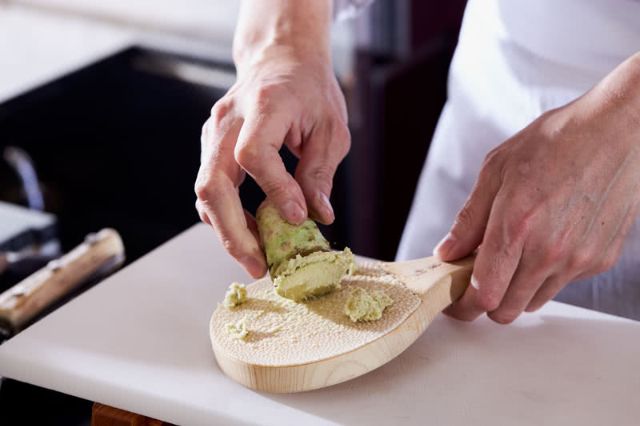
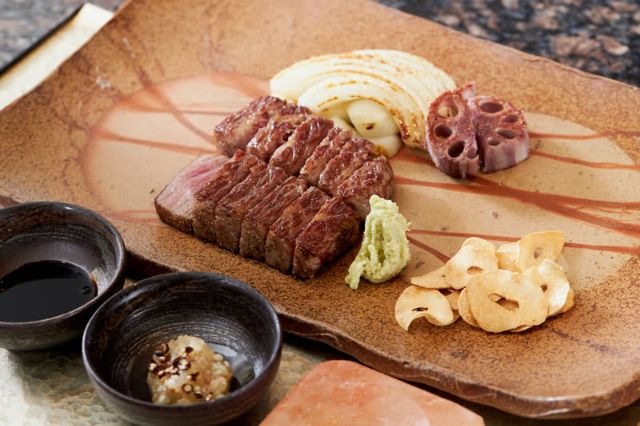
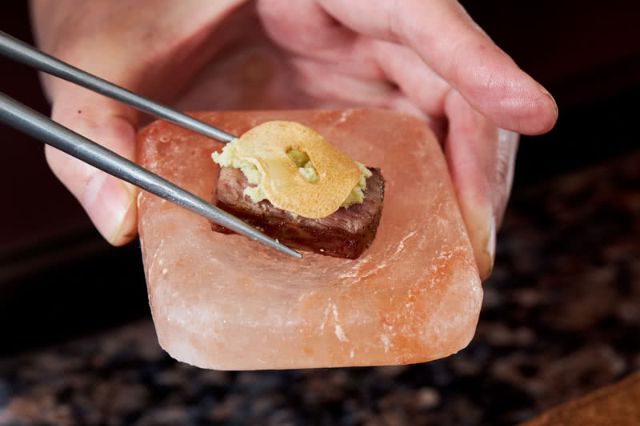
Now, for the first bite. First, the delicious fats of the meat spread inside the mouth. Next comes the raw wasabi, lightening the overall flavor. You'll also get to savor the faint saltiness given by the rock salt and the crispy texture of the garlic. Try it with as many combinations as possible.
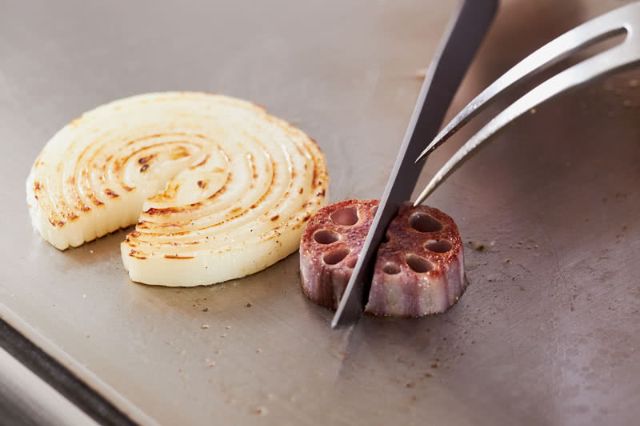
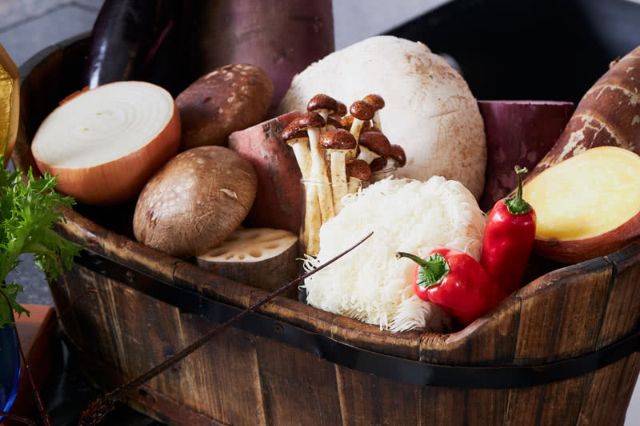
Even the vegetables served on the side are thoroughly selected and prepared. It's possible to pick 2 items among many seasonal vegetables stocked from various areas, including rare-to-find products. They're so tasty and juicy you won't believe they've been grilled!
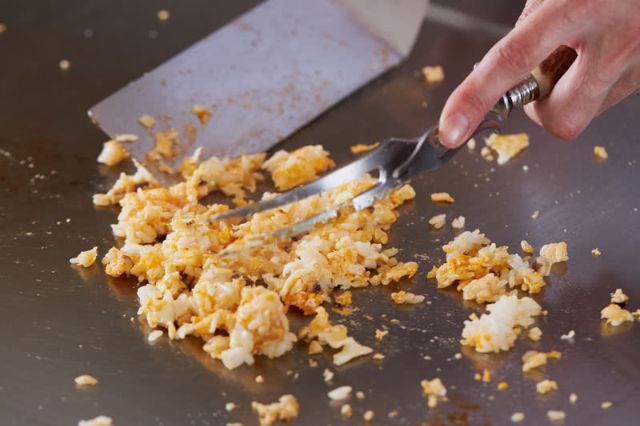
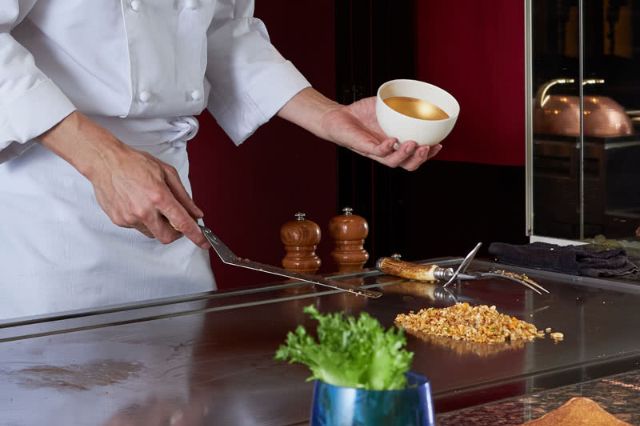
For this dish, they use an egg brand called "Araucana", originally from Chile, but produced in Japan. Its rich egg yolk is thoroughly mixed with white rice, while the fluffy whites are stir-fried. Then, the chef throws in some steamed shiitake mushrooms to add more flavor and texture. You'll love it's lovely garlic aroma and fluffy texture.
At the end of the meal, you need to transfer to another room for dessert. Here you can enjoy freshly brewed coffee with their seasonal dessert.
7. Experience [Kobe Beef] teppanyaki prepared before your eyes
![7. Experience [Kobe Beef] teppanyaki prepared before your eyes](https://rimage.savorjapan.com/svj/image/discover_oishii_japan/1318/article_151494_w640z.jpg)
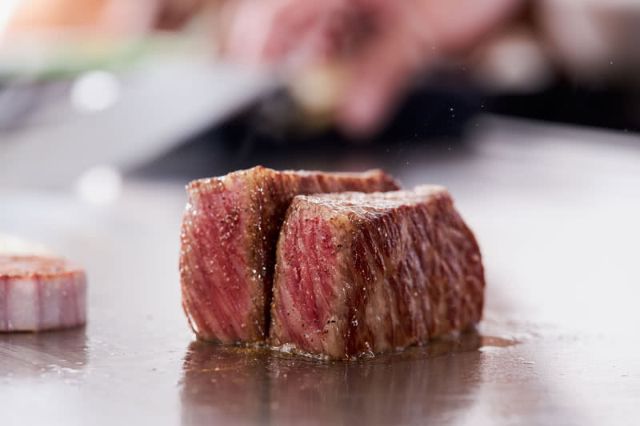
8. Pair your Teppanyaki with Sake
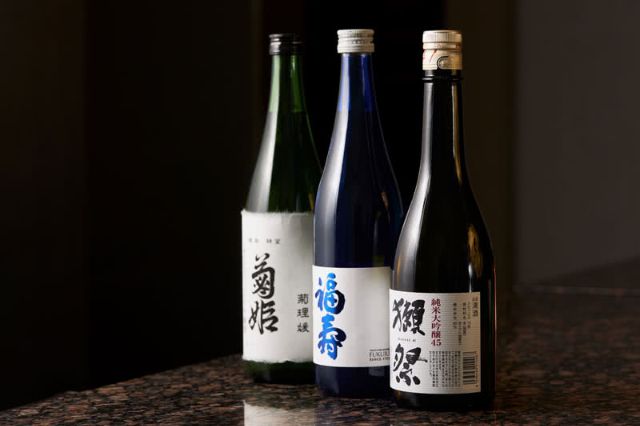
9. Tonight, enjoy high-end teppanyaki at [Teppanyaki Ginza Onodera]
![9. Tonight, enjoy high-end teppanyaki at [Teppanyaki Ginza Onodera]](https://rimage.savorjapan.com/svj/image/discover_oishii_japan/1318/article_151497_w640z.jpg)
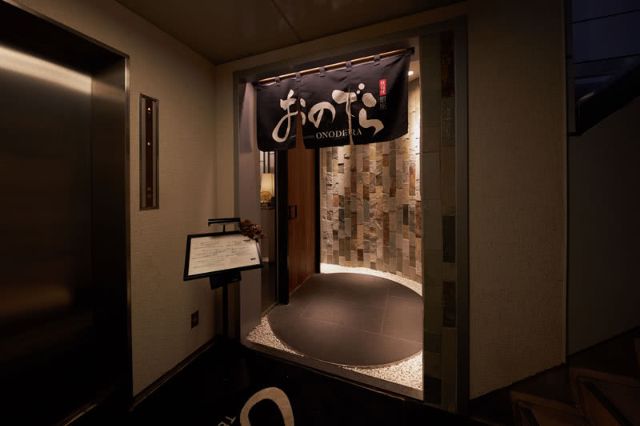
[Closed] Teppanyaki Ginza Onodera
Closed: None
Average price: [Dinner] 20,000 JPY / [Lunch] 5,000 JPY
Access: 1 minute walk from Exit A8 of [Ginza Station]
Address: 7F, Ginza Act Bldg., 4-6-18 Ginza, Chuo-ku, Tokyo
Please check the official homepage or the SAVOR JAPAN restaurant information page for the latest updates, such as the operating hours and the new menu.
Disclaimer: All information is accurate at time of publication.
Thank you for reading our article.
Our goal is to take your culinary journey to the next level by helping you find the best restaurant. With SAVOR JAPAN, you can search and make reservations for
the Teppanyaki restaurants found in and around Ginza that fill your needs.
Discover more Teppanyaki restaurants by area
- Tokyo Area
- Near Tokyo
- Kyoto and Osaka Area
- Hokkaido Area
- Northern Honshu (Tohoku)
- Central Honshu (Chubu)
- Western Honshu (Chugoku)
- Shikoku
- Kyushu
- Okinawa and Ryukyu Islands
Discover more restaurants to eat Japanese Cuisine by area
Keywords
Related Articles
New Articles
Categories
Cuisine
- Bars (23)
-
Japanese Cuisine (677)
- Kaiseki (46)
- Nabe (19)
- Okonomiyaki (24)
- Shabu Shabu (37)
- Soba (18)
- Sushi (137)
- Tempura (19)
- Teppanyaki (46)
- Shojin Ryori (3)
- Tonkatsu (11)
- Kushiyaki (10)
- Yakitori (44)
- Sukiyaki (35)
- Japanese Cuisine (342)
- Oyster (2)
- Sashimi/ Seafood (20)
- Unagi (eel) (31)
- Motsu Nabe (offal hotpot) (6)
- Mizutaki (chicken hot pot) (3)
- Oden (8)
- Kaisendon (seafood bowl) (9)
- Udon (2)
- Taverns(Izakaya) Cuisine (124)
- Western Cuisine (42)
- Italian/French Cuisine (95)
- Yakiniku/Steak (225)
- Chinese Cuisine (26)
- Ramen (Noodles) Cuisine (25)
- Cafe/Sweets (60)
- Other Asian Cuisine (5)
- Global/International Cuisine (7)
- Alcohol (45)
- Other (11)
Area
- Shikoku (10)
- Kyoto and Osaka (344)
-
Tokyo (458)
- Tokyo (284)
- Ginza (43)
- Roppongi (22)
- Shibuya (26)
- Shinjuku (46)
- Asakusa (20)
- Ebisu (12)
- Tsukiji (10)
- Tokyo Landmarks (4)
- Ueno (23)
- Akihabara (9)
- Ikebukuro (12)
- Jiyugaoka, Denenchofu, Nakameguro (9)
- Shimokitazawa (4)
- Kichijoji (3)
- Tachikawa (1)
- Omotesando, Harajuku, Aoyama (18)
- Akabane (1)
- Kagurazaka (4)
- Akasaka (10)
- Odaiba (1)
- Tsukishima, Harumi, Toyosu (3)
- Near Tokyo (100)
- Okinawa and Ryukyu Islands (58)
- Hokkaido (124)
- Northern Honshu (Tohoku) (31)
- Central Honshu (Chubu) (144)
- Western Honshu (Chugoku) (32)
- Kyushu (92)
Archives
- December 2025(8)
- November 2025(4)
- October 2025(3)
- September 2025(6)
- August 2025(11)
- July 2025(19)
- June 2025(18)
- May 2025(34)
- April 2025(43)
- March 2025(30)
- February 2025(36)
- January 2025(26)
- December 2024(69)
- November 2024(31)
- October 2024(15)
- September 2024(39)
- August 2024(65)
- July 2024(31)
- June 2024(54)
- May 2024(61)
- April 2024(28)
- March 2024(31)
- February 2024(42)
- January 2024(32)
- December 2023(20)
- November 2023(5)
- October 2023(11)
- September 2023(7)
- August 2023(18)
- July 2023(8)
- June 2023(8)
- May 2023(18)
- April 2023(15)
- March 2023(1)
- January 2023(1)
- April 2022(2)
- March 2022(2)
- February 2022(1)
- January 2022(1)
- July 2021(1)
- March 2021(1)
- February 2021(1)
- December 2020(1)
- October 2020(1)
- September 2020(2)
- August 2020(10)
- July 2020(6)
- June 2020(9)
- May 2020(11)
- April 2020(8)
- March 2020(8)
- February 2020(13)
- January 2020(9)
- December 2019(24)
- November 2019(8)
- August 2019(14)
- July 2019(15)
- June 2019(18)
- May 2019(17)
- April 2019(16)
- March 2019(22)
- February 2019(22)
- January 2019(26)
- December 2018(34)
- November 2018(40)
- October 2018(32)
- September 2018(11)
- August 2018(8)
- July 2018(6)
- June 2018(9)
- May 2018(10)
- April 2018(21)
- March 2018(74)
- February 2018(39)
- January 2018(26)
- December 2017(59)
Keywords
- Omakase
- Accessible
- Affordable
- All-You-Can-Eat
- Amazing Scenery
- anime
- Art
- Autumn
- Awards
- Beer Gardens
- Breakfast
- Chef Recommendations
- Cherry Blossoms
- Chinese
- Close To Station
- Condiments
- Counter
- Coupon
- Crab
- Culture
- Dassai
- Dates
- delivery
- Early Summer
- Editor's Recommendation
- English Available
- Event
- Expo
- Fall Leaves
- Family-Friendly
- Famous Restaurant
- Famous Tourist Spot
- Fast Food
- festival
- fireworks
- Flower Farm
- Free Wi-Fi
- French
- Great Location
- Guide
- Hibachi
- hotpot
- How To
- hydrangea
- Hygiene
- Illumination
- Italian
- Izakaya
- Japanese
- Japanese alcohol
- jingisukan
- Kaiseki
- Kappo
- Kushiage
- Kushikatsu
- Kyoto
- Late-Night
- Lunch
- Manners
- matsusakagyu
- Michelin
- mizutaki
- Model Course
- monjayaki
- motsunabe
- Mt.Fuji
- Multilingual Menus
- Nabe
- Narita Airport
- New Year
- Ninja
- Noodle
- Oden
- Okonomiyaki
- omotenashi
- Onsen
- Osaka
- Osaka Station
- Photogenic Site
- pizza
- PR
- Private Room
- Ramen
- ranking
- Recipe
- Regional Cuisine
- Resort
- Rice Bowl Dish (Donburi)
- sacred places
- Sake
- Sakura
- Sashimi
- sea urchin
- Setouchi Area
- Shabu Shabu
- sightseeing
- Signature Dish
- Soba
- Solo Diners Welcomed
- Spicy Food
- Spring
- Steak
- Summer
- Sunflower
- Sushi
- takeout
- Teppanyaki
- Terrace Seating
- Tokyo
- Tokyo Experiences
- Tokyo Skytree
- Tokyo Tower
- unagi
- UNESCO
- Vegan
- Vegetarian
- Wagyu
- What Popular Gourmet Sites Recommend
- Whisky
- Wine Bar
- Winter
- Wisteria
- Workshop
- World Heritage Site
- World Writers
- Yakiniku
- Yoshoku
- Yuba
- Zen
Discover Restaurants By Area
-
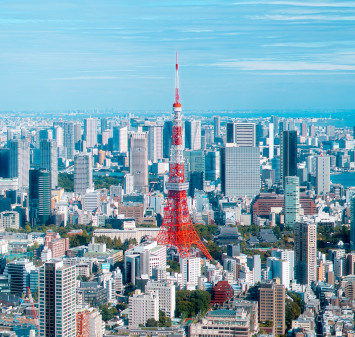
Tokyo Area
Japan's largest city, Tokyo, is the center of culinary culture in Japan. Countless Tokyo restaurants serve every kind of food imaginable and the Toyosu fish market keeps restaurants stocked with the nation's finest fish.
-

Near Tokyo
Coastal areas, mountains and valleys surrounding Tokyo are bursting with tourist destinations, such as hot springs and ski slopes, where many unique foods are only available locally.
-
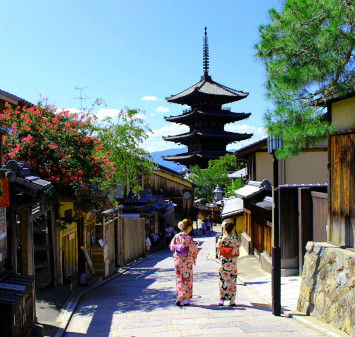
Kyoto and Osaka Area
The cities of Kyoto and Osaka, together with their surrounding areas, have greatly influenced Japan's culinary culture since the 7th Century. The region is renowned for its entertainment, Kobe beef, and wide-ranging traditional dishes.
-
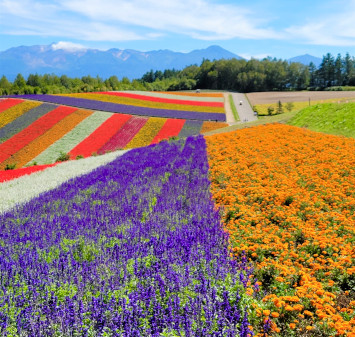
Hokkaido Area
The island of Hokkaido is home to wide-ranging produce of the finest quality, such as rice, meat, vegetables, fish and fruit. Popular dishes from Hokkaido include robatayaki (food slowly roasted on skewers) and Sapporo miso ramen.
-
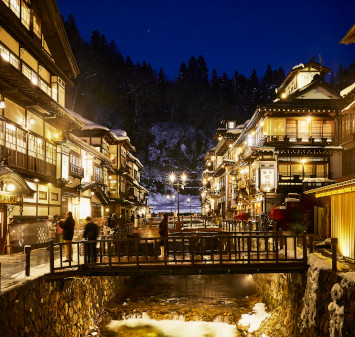
Northern Honshu (Tohoku)
The northern end of Japan's main island, Honshu, is renowned for its seasonal fruit and vegetables, nation-leading harvest of fish (especially tuna from Ohma), and delicious beef from Yonezawa, Sendai and Yamagata.
-
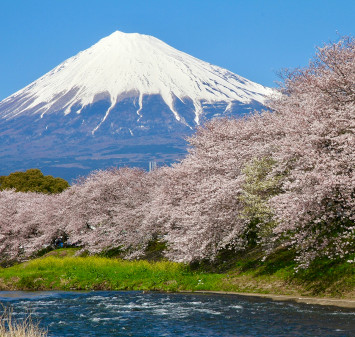
Central Honshu (Chubu)
Chubu is in the center of Japan's main island, Honshu, and its culinary culture reflects its position between Japan's western and eastern halves. Delicious Hida beef, world-famous Mount Fuji and many acclaimed sake breweries are in Chubu.
-
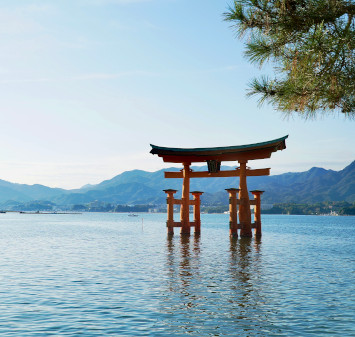
Western Honshu (Chugoku)
Chugoku, on the southwest of Japan's main island, is rich with diverse produce. Many of its products are praised as Japan's best, including Matsuba crabs from Tottori and oysters from Hiroshima. Its pears and muscats are also top grade.
-
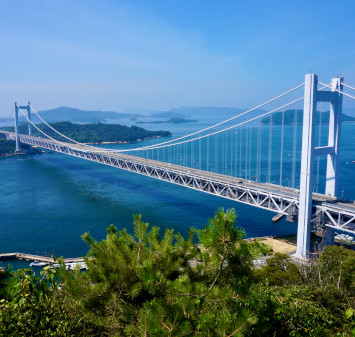
Shikoku
The mild climate of Shikoku is ideal for growing citrus fruit such as sudachi. Shikoku is also famous for Sanuki udon noodles, huge yields of tiger prawn from Ehime Prefecture and the best torafugu (tiger globefish) in the country.
-
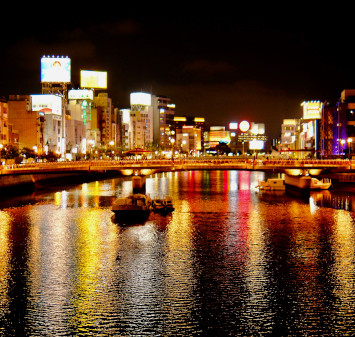
Kyushu
Western culture was first introduced to Japan through Kyushu, Japan's third largest island, where the influence of Portuguese and other western cuisine influenced the creation of a colorful culinary tradition.
-
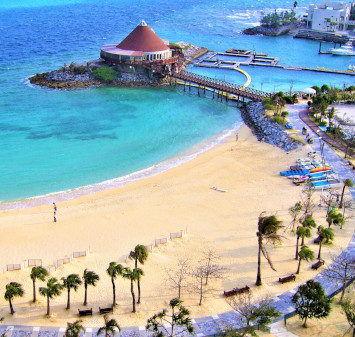
Okinawa and Ryukyu Islands
Okinawa, Japan’s southernmost prefecture, is a treasure trove of distinctive dishes and drinks that have become popular throughout Japan, including Okinawa soba, unique sushi toppings and Awamori distilled liquor.
![[Closed] Excellent Wagyu in Ginza, Tokyo! One of the Best Teppanyaki Spots According to Foodies from All Over](https://rimage.savorjapan.com/svj/image/discover_oishii_japan/1318/article_head.jpg?t=1683789037)
